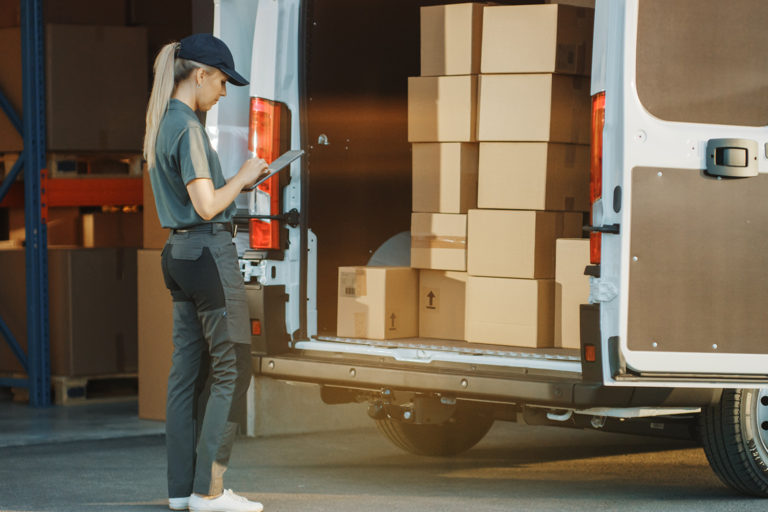Freight management is a fundamental part of Australia’s economy – and all of us are reliant on a constant flow of commercial transport to go about our daily lives. Businesses can thrive or struggle based on their freight management alone; such is the importance of this task for efficiency and customer satisfaction.
Here are 20 statistics around freight management, transport and shipping that might surprise you.
Freight’s importance to Australian economy
We know freight is vital to the economy – but just how much of a chunk is it? These statistics paint a clearer picture.
- Freight represented 8.5% of major infrastructure industries as a percentage of GDP in 2021/2. Link
- The Transport and Logistics sector in Australia has an estimated annual revenue of $101.51 billion, adding $39.91 billion to the Australian economy in 2019-20.
- A 1% improvement in the efficiency of the sector generates $2 billion of gains to the economy each year. Link
- Logistics provides critical services to three of the top four industries by value in Australia today – mining (9.6%), construction (7.4%) and manufacturing (7.4%). Link
The big players in freight management
Freight management is a complex industry, with many moving parts and many participants. These freight statistics will help you visualise the size and shape of the Australian freight industry.
- There are 47,162 road freight transport businesses in Australia as of 2022. Link
- According to the National Heavy Vehicle Regulator, 165,000 businesses make up the heavy vehicle supply chain. NHVR, Supply chain support for new laws, 5 May 2017 media release
- The transport and logistics sector employs over 600,000 people across its major sub-sectors: road transport, logistics, warehousing and stevedoring. Department of Jobs and Small Business, Australian Jobs 2019
- Australia’s freight task grew to 759.6 billion net tonne kilometres in 2019, an increase of 4.1% since 2017. Rail freight was the main contributor to this new growth, accounting for 56% of the change over the period. Link
The growing freight management challenge
A pandemic, supply chain pressures and rising costs have led to a challenging landscape for any business trying to navigate logistics and freight management. Some of the numbers might surprise you!
- The volume of freight carried is expected to grow by over 35 per cent between 2018 and 2040, an increase of 270 billion tonnes (bringing the total volume to just over 1000 billion tonne kilometres). Bureau of Infrastructure, Transport and Regional Economics (BITRE) data
- The nature of the freight challenge is also changing in conjunction with growing population density pressures – urban freight is forecast to grow by nearly 60 per cent over 20 years to 2040. Bureau of Infrastructure, Transport and Regional Economics (BITRE) data
- Each year our infrastructure operators, transport companies and logistics experts deliver about four billion tonnes of goods across Australia – that is 163 tonnes of freight for every person. Melbourne alone requires approximately 15,000 tonnes of food to be delivered every day. Sheridan, J., Carey, R. and Candy, S. (2016) Melbourne’s Foodprint: What does it take to feed a city?
Rise of ecommerce
The biggest logistics changemaker in modern times is online shopping. Let’s take a look at the rise of ecommerce, and how the pandemic has accelerated its growth (and given shippers and logistics businesses a few headaches in the process).
- E-Commerce sales were $870 billion in the US in 2021, a 14.2% increase over 2020 and a 50.5% increase over 2019. E-Commerce represented 13.2% of all retail sales in 2021 in the US. Link
- In 2018, the growth rate of online sales was close to 30 per cent. During the 2020 lockdowns, this surged to over 60 per cent. Link
Value to be unlocked?
While there are many challenges around freight management, there are even more opportunities for savvy shippers, clever ecommerce businesses and forward-thinking retailers and wholesalers. Here are a few opportunities we think are ripe for the picking.
- While it only represents 0.1 per cent of freight by volume, the value of freight moved by air continues to soar (21 per cent of total international trade value).
- A 1 per cent improvement in productivity could generate $8-20 billion in savings to the national economy over 20 years. Transport & Infrastructure Council National Freight and Supply Chain Strategy August 2019
- 7.4% of consignment invoices have a discrepancy of more than $1. An analysis of MachShip’s most-utilised carriers between 1 May – 30 June 2021
- MachShip identifies more than 13000 carrier invoice discrepancies each month. Link
- MachShip’s top 20 customers experienced 2.6x average ROI from invoice reconciliation alone. An analysis of our Top 20 Customers between 1 May – 30 June 2021
- MachShip has system integrations in place with 200 of Australia’s leading transport carriers.
- MachShip helps businesses save an average of 10 hours per week fielding customer tracking calls. Link
MachShip is a cloud-based freight management platform serving 3PLs, 4PLs, retailers and wholesalers. We’re fully independent, and link you with 200+ Australian transport carriers in just a couple of clicks. Want a free demo? Get in touch here.

